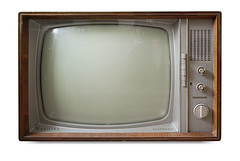College Football National Championship Rant
Sep 10
This is my annual rant about college football ranking. The two major systems that are used until the 6th week when the BCS system kicks in, are the coaches poll and the sports writer poll. Both of them are based on the feelings of the voters and are heavily stilted toward the fashionable conferences. Admittedly, the major conferences do each have 3 or even 4 good teams. I also do not have a problem with the polls being the opinions of the voters. What I complain about the is the inconsistency that this method brings. A team can win and still drop in the polls. A team can get pounded and only drop a few spots. The thing that gets to me is when teams with several losses is still ranked above an undefeated team. Now we are only in the second week of the season, so there are no apparent problems yet.
When we finally get the BCS system results, the rankings get much more stable. An opinion pole is include in that system along with a computer poll and several statistical polls. As the polls progress, there is still a bias towards certain conferences based on “strength of schedule”. So if you play teams that are ranked, you go up in ranking. If a lot of the teams in your conference are ranked, you guaranteed a ranked position. The result of this type system is the insanity of having a national championship game featuring two teams from the same conference.
There are 12 conferences plus some independent schools eligible for the BCS. A true playoff would have the 12 conference winners contending for the championship. To be fair to the independent teams, there would have to be some “wild card” invitations for those independent teams that are still highly ranked. This would allow teams who are blocked out of BCS bowls because of the polls to have a chance. If there is that big of a talent difference, then the playoff games will just be warm ups for the big boys. If the opinions are incorrect, then the smaller schools will have a chance to prove them wrong.
Is there a perfect polling method? Probably not. My rant is a reaction to the ridiculous statements by sports casters with the new playoff proposal that two slots should be reserved for the South East Conference. One of the problems, or benefits, of the bowl system is automatic bids. For the national championship, all positions should be earned, not awarded. The four team playoff is a good start, let’s not mess it up immediately by determining who should be in it at the beginning of the season. The SEC is good right now, but that is the genius of the conference system, you determine a single champion. Then you have the various champions compete for the right to claim the top spot for the year, just like the pros.
 RSS
RSS











